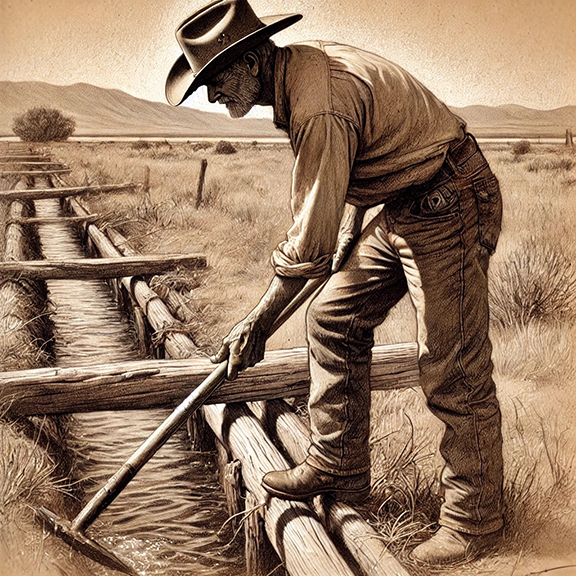Does the Nonprofit Model Still Work?
by AwA
This article originally appeared in the Summer 2025 issue of Art with Altitude.
In the Yampa Valley, there are approximately 200 nonprofit organizations providing services across a wide spectrum—from environmental conservation and outdoor recreation to healthcare, food insecurity, housing, mental health and, of course, arts and culture. These organizations typically emerge in response to a need—something that falls outside the scope or capacity of city government, or a passion project initiated by individuals seeking to serve their community.
At the heart of every nonprofit is a mission—a guiding statement that defines the organization’s purpose and impact. Overseeing that mission is a volunteer Board of Directors, typically composed of individuals who contribute their time, expertise and often financial support to advance the organization. The board’s primary responsibility is to ensure financial health and fidelity to the mission (which can evolve over time). Boards hire an Executive Director (ED), who is then responsible for hiring and managing staff.
When the nonprofit model works well, with clearly defined roles, aligned leadership and a shared commitment to mission and sustainability, it can lead to extraordinary impact. From solving complex health issues to producing groundbreaking artistic works, nonprofits have transformed communities and changed lives around the world.
But when the model breaks down, the consequences can be severe. A misaligned or inexperienced board, a new leader whose vision diverges from staff or board priorities, or a lack of strategic planning can result in fractured leadership, mass resignations, mission drift or in worst cases, organizational collapse.
Strengths of the Nonprofit Model
(especially in arts and culture):
1. Mission-Driven Impact—Unlike for-profit models, nonprofits are driven by purpose over profit. Donor dollars and grants go directly toward community-centered outcomes.
2. Diverse Revenue Streams—Funding can come from earned income, individual donations, grants, sponsorships, government support and endowments. This helps organizations survive economic fluctuations—though it can also make them vulnerable.
3. Fills Critical Gaps—Nonprofits often address needs that municipalities cannot meet due to limited resources or jurisdiction.
4. Creative Freedom—Without the pressure to generate profit, nonprofits can take artistic and programmatic risks, fostering innovation and experimentation.
5. Volunteer Power—Volunteers contribute significant labor, often filling vital operational or event-based roles that reduce overhead.
6. Governance and Oversight—A strong board brings diverse perspectives, accountability and professional expertise.
7. Community Engagement—Nonprofits are uniquely positioned to build relationships and foster civic pride, especially in arts and cultural spaces.
Challenges and Risks:
1. Financial Instability—Economic downturns, shifts in donor behavior or changes in funding priorities can quickly destabilize a nonprofit.
2. Board-Executive Director Leadership Tensions—Boards are often composed of well-meaning volunteers who may lack the training or nonprofit literacy to lead effectively. This can result in weak fundraising, strategic drift or micromanagement.
3. Decision-Making Bottlenecks—While board governance is critical, it can sometimes hinder rapid decision-making, especially when organizational vision is overly constrained by caution or bureaucracy.
4. Staff Burnout—Undercompensation and a culture of overwork (“passion over payroll”) can lead to high turnover and low morale.
5. Changing Audience Behavior—Particularly after COVID-19, arts organizations face ongoing challenges with attendance, engagement and donor fatigue.
6. Overstepping Boundaries—Board members who insert themselves into day-to-day operations can create friction, stifle innovation and undermine staff leadership.
7. Fragmented Funding—As the number of nonprofits grows, donor dollars are spread thinner. This “more nonprofits, less funding per organization” dynamic can weaken even well-run entities.
A well-functioning board can be an enormous asset—offering financial support, strategic leadership and strong community connections. But a disengaged or misaligned board can be a major liability, often leading to stagnation or even closure.
The nonprofit model remains one of the most powerful tools for community-driven change—but it is inherently fragile. There is little accountability for board performance, and in the absence of experience, training or shared vision, organizations can falter.
As more national talent moves into the Yampa Valley, the question becomes: How can local nonprofits evolve to engage this growing pool of expertise? Building bridges between legacy leadership and new voices may be key to ensuring nonprofits not only survive—but thrive—in the decades ahead.
Elevate the Arts: Have ideas for how to improve the nonprofit model? Email dagny@undiscoveredearth.com AwA




